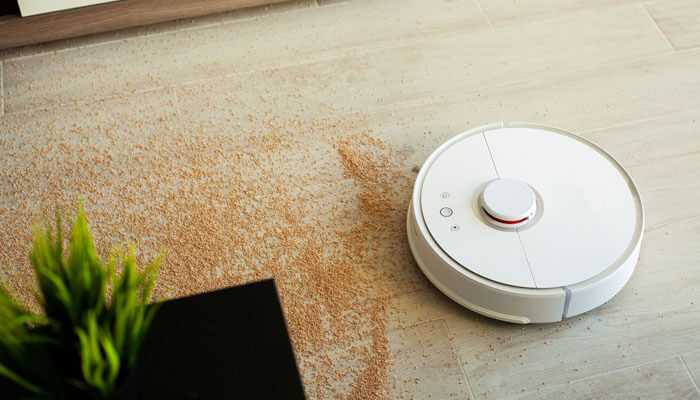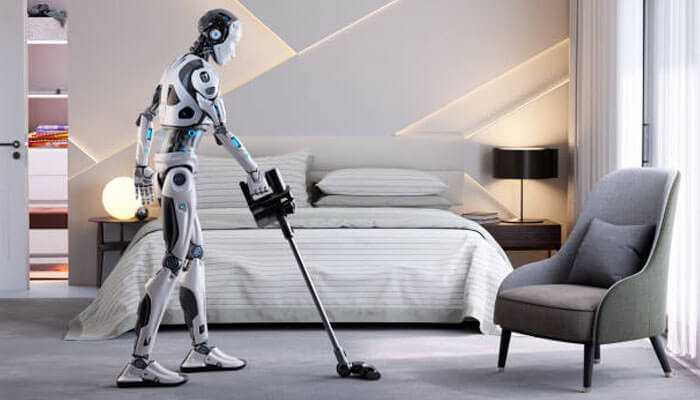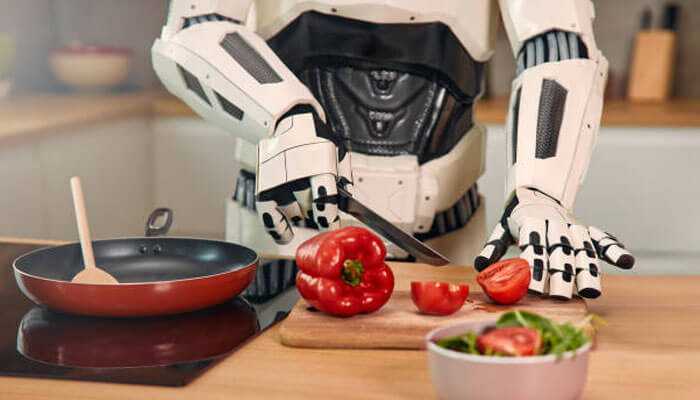Introduction: Embracing the Robotic Revolution
Robots are making their way from the world of stories to the reality of our everyday lives, and in the last several years, technology has gradually evolved into modern reality. Household robots, once the stuff of futuristic goals, are now an indispensable part of contemporary global homes. From cleaning flooring to cooking meals, these robotic assistants are revolutionizing the way we stay. In this guide, we’re going to delve into the functions and benefits of family robots, exploring how they’re reworking our domestic lives.
Understanding Household Robots
Household robots include a wide variety of devices designed to automate various tasks around the home. They come in exclusive shapes, sizes, and functionalities, each designed to perform specific tasks or responsibilities. Whether it’s vacuuming flooring, mowing lawns, or even imparting companionship, these robots intend to make our lives less complicated and more efficient. To recognize their competencies completely, it is important to explore their inner workings and evolution.
What Exactly Are Household Robots?
Essentially, household robots are autonomous or semi-autonomous machines programmed to perform responsibilities traditionally completed by people. They leverage superior technologies, which include artificial intelligence, sensors, and actuators, to navigate and engage with their environment effectively. From easy, single-purpose robots to complicated, multi-practical systems, these devices provide a wide range of advantages to their owners.
The Fundamentals Behind Magic
To appreciate the abilities of family robots, it’s essential to understand how they function. For most contemporary robots to recognize their surroundings, make selections, and carry out responsibilities, they need a combination of sensors, computers, and robotics. For instance, a robot vacuum makes use of infrared sensors to identify difficulties and navigate around objects at the same time as cleaning floors. Understanding those underlying mechanisms can help users maximize the potential of their robot assistants.
A Brief History of Household Robotics
The concept of household robots has existed for centuries, with early designs appearing in ancient myths and stories. However, it wasn’t till the twentieth century that great improvements in technology made practical household robots a reality. From the primary programmable robotic, Shakey, developed in the 1960s to the commercialization of robot vacuum cleaners in the 1990s, the adventure of household robotics has been marked by innovation and development.
Household Robots: A Multifaceted View
Today, household robots are available in numerous shapes and designs, each meeting exclusive needs and choices. Some of the most commonplace types encompass:
1. Cleaning robots:

2. Kitchen Robots:
From automated cooking home equipment to robotic chefs, these gadgets help with meal guidance and cooking responsibilities.
3. Personal assistant robots:
These robots can perform a huge variety of duties, from handling schedules to providing amusement and companionship.
4. Security Robots:
Designed to enhance domestic security, these robots monitor premises, detect intruders, and provide real-time indicators.
5. Gardening Robots:
From computerized lawnmowers to robotic gardeners, these devices take the hassle out of outside maintenance.
Functions of Household Robots
Now that we’ve got better information on household robots, let’s discover their various functions in greater detail. From simplifying household responsibilities to improving protection, those robots provide an extensive range of talents that could benefit house owners in several ways.
1.The Role of Cleaning Robots in Modern Homes
One of the most popular programs for household robots is cleaning and renovation. Robot vacuum cleaners, consisting of the Roomba series, have become ubiquitous in homes worldwide due to their capacity to autonomously smooth floors with minimum human intervention. These robots use a combination of brushes, suction, and navigation algorithms to navigate around boundaries and effectively cast off dirt, dust, and particles from diverse surfaces.
2. From Vacuuming to Mopping: How Robot Cleaners Are Revolutionizing Home Maintenance
In addition to vacuuming, many modern-day cleaning robots also provide mopping and scrubbing capabilities, letting them address a broader variety of cleansing tasks. These robots typically have detachable mopping pads or water tanks that moisten and wipe floors, leaving them sparkling easily. By automating recurring cleansing obligations, those robots free up treasured time and strength that homeowners can use for more exciting sports.
3. Mastering the Kitchen: Cooking and Food Preparation Robots Simplify Mealtime
Another region where family robots shine is inside the kitchen. From automatic coffee makers to robotic sous chefs, these gadgets can help with numerous cooking and meal training responsibilities, making mealtime more handy and fun. For instance, robotic arms equipped with specialized grippers and sensors can chop vegetables, stir substances, and even flip pancakes with precision and accuracy. Whether it is whipping up a quick breakfast or making ready a gourmet dinner, kitchen robots are reworking the way we approach cooking.
 4. Personal Assistants at Your Click and Call: The Tasks Handled through Robot Butlers
4. Personal Assistants at Your Click and Call: The Tasks Handled through Robot Butlers
Security robots are designed to enhance domestic safety by monitoring premises, detecting intruders, and presenting real-time alerts to house owners. These robots are normally equipped with integrated cameras, movement sensors, and alarms, letting them discover suspicious activity and minimize possible threats. Some superior fashions can even monitor specific areas automatically, providing an additional layer of protection against thefts and assaults. By maintaining a watchful eye on their surroundings, these robots assist homeowners in experiencing peace of mind knowing that their property is steady.
5. Automating Outdoor Maintenance with Robotic Gardeners
Gardening robots are designed to help with outdoor renovation duties, including garden mowing, weed removal, and plant watering. These robots come in diverse shapes and sizes, from self-sufficient garden mowers that trim grass to robot planters that sow seeds and fertilize soil. By automating exertions and extensive gardening chores, those robots allow owners to preserve lovely and wholesome outdoor spaces with minimal effort.
Benefits of Integrating Household Robots
Now that we’ve explored the features of family robots, let’s speak about the many benefits they provide to owners. From saving time and effort to improving security and accessibility, those robots can enhance our lives in several ways.
1. Saving Time and Effort: How Robots Streamline Daily Activities and Tasks
One of the most significant advantages of household robots is their ability to save effort and time on routine tasks and responsibilities. By automating repetitive and exertion-in-depth activities together with cleansing, cooking, and gardening, these robots free up valuable time that owners can spend on more exciting and fulfilling hobbies. Whether it’s pursuing interests, spending time with a circle of relatives, or enjoying themselves, household robots allow users to focus on what’s most important to them.
2. How Automation Enhances the Accuracy and Effectiveness of Household Duties
In addition to saving time, family robots also improve the accuracy and effectiveness of household obligations. Unlike humans, robots can carry out tasks with constant precision and reliability, ensuring that tasks are finished to the best standards whenever possible. Whether it is vacuuming floors with uniform insurance or watering plants with the proper quantity of moisture, these robots deliver reliable results that homeowners can depend on.
3. Inclusivity and Accessibility: How Robots Assist Individuals with Disabilities
For people with disabilities or mobility issues, family robots can provide worthwhile help with everyday obligations. From fetching items to navigating through the house, these robots help promote independence and enhance the quality of life.
4. Environmental Impact: Sustainability and Energy Efficiency in Automated Living
Many family robots are designed with power performance and sustainability in mind, use minimal energy to operate, and employ green materials in their creation. By reducing the need for manual labor and keeping sources, robots make contributions to a greener, more sustainable future.
Conclusion: Embracing the Future Today
Household robots have advanced significantly since their inception, and their ability to transform our homes and lifestyles is greater than ever. By understanding their functions and benefits, we may use the power of robotics to create smarter, more environmentally friendly living spaces for ourselves and future generations. So whether or not you need a helping hand with tasks or want to decorate your house for security, don’t forget to welcome a family robot into your existence and embrace destiny today.



